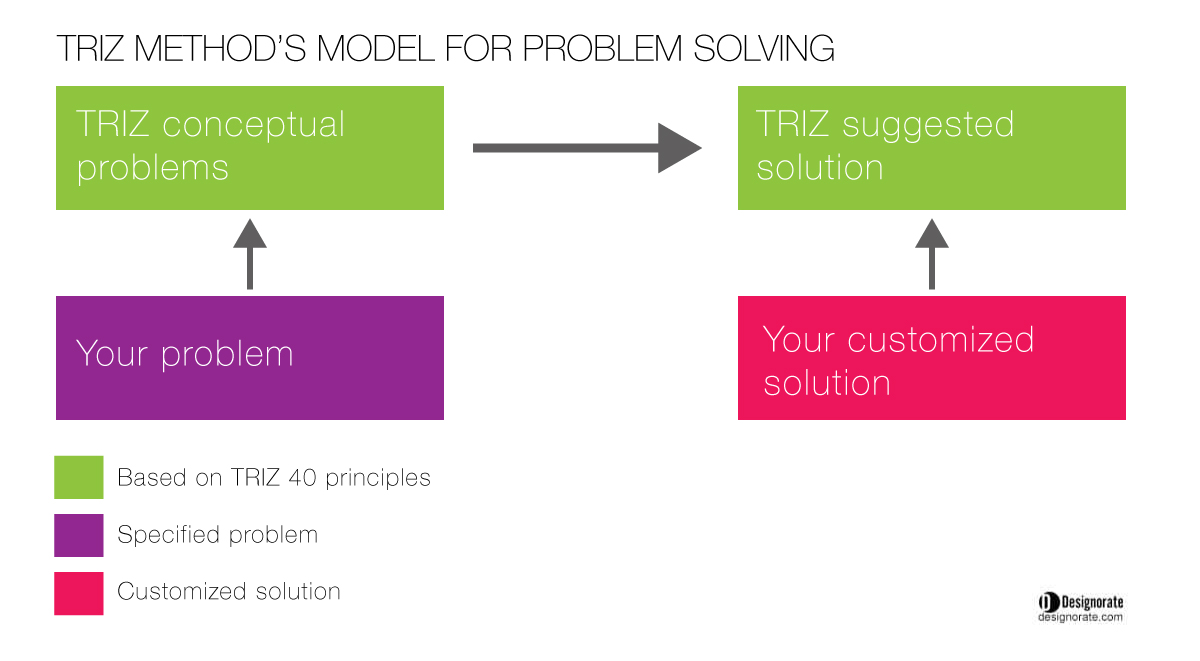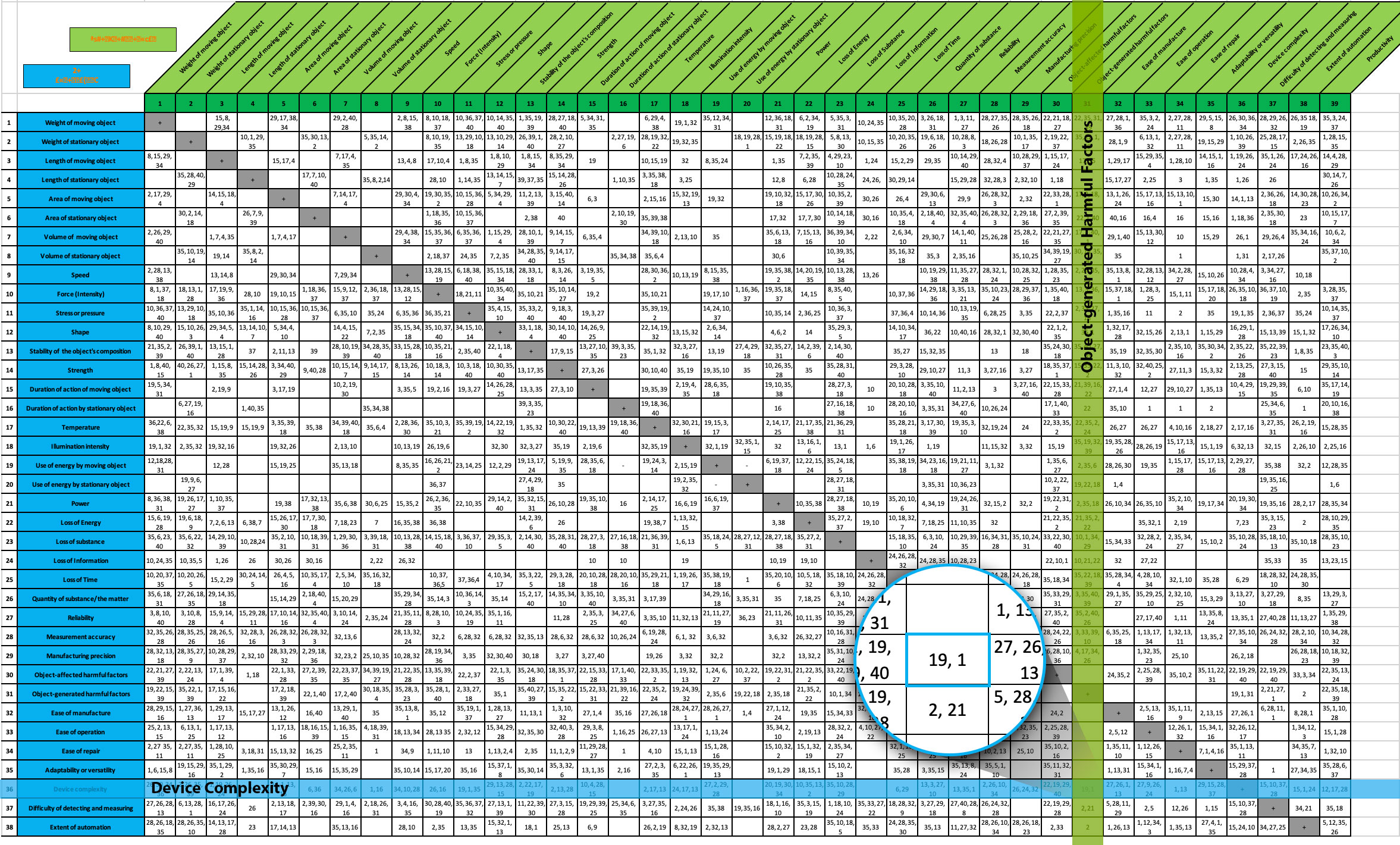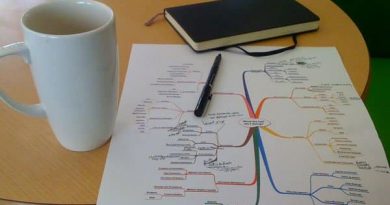How to Use TRIZ in the Problem-Solving Process
As we attempt to solve the problems and find creative solutions for them, we take different routes throughout the problem-solving process, such as applying the Double Diamond design thinking, brainstorming sessions, root cause analysis, and other models that help us to observe, build insight, and evaluate the situation from different perspectives giving the advantages and disadvantages in each model. The problem-solving process requires utilising various tools to identify the root cause of the problem and the potential solutions to build a course of action to be used in the implementation plan, such as the TRIZ method that can be used to solve complex problems based on the consensus of a decision-making team (check the 8D Problem Solving).
To get the most out of this article, you must download our free TRIZ Problem Solving template (in Excel Spreadsheet format) that includes the principles and contradictions required to follow the steps highlighted later in the article.
What is the TRIZ method?
The TRIZ method is a methodology for the problem-solving process developed by Genrich Altshuller, a Russian engineer and inventor, in the mid-20th century. The acronym, TRIZ, stands for “Teo”iya Resheniya Izobreta”elskikh Zadach”, which translates t” “Theory of Inventive Problem Solving” in English.
The TRIZ method is based on the idea that there are universal principles of innovation and problem-solving that can be applied to any field or industry. It provides a systematic approach to analyzing and solving problems by identifying contradictions and finding innovative solutions. It has been used successfully in the problem-solving process in many fields, including engineering, design, manufacturing, and business, to help solve complex problems (check The Six Systems Thinking Steps to Solve Complex Problems) and generate new ideas and possible solutions. However, from the creative thinking and design perspective, many see the tool as hinder to creativity rather than a driver of creative problem-solving. While this claim is correct if we saw the tool solely from the perspective of its mechanism, it can be a good tool for collaboration and seeing problems from different viewpoints that can be used to feed into developing different potential solutions and prototypes to be tested to reach the best solution.
The problem-solving process using TRIZmethod is based on two aim principles:
1) The principle that somebody, sometime, somewhere, has already solved our problems or one similar to it, and creativity means finding that solution and aligning it to the current problem
2) We shouldn’t accept contradictions. You should resolve them.
TRIZ Method Principles
Before moving forward with the steps of the problem-solving process using the TRIZ method, we need to have a clear understanding of the different principles underpinning the method practice:
1) The 40 TRIZ principles are the models used to solve problems. For example, the second principle, “Taking out”, refers to separating the part of the system that causes the contradiction from the rest. The noisy air conditioner compressors are removed from the interior part of the building and added outside to reduce the noise inside.
2) The primary function is the main purpose of the invention. For example, the car’s primary function is transportation, and other functions are considered secondary functions, such as comfort and protection.
3) Ideality and harm. Ideality refers to the optimal or ideal state of the invention without any contradictions. This is usually an imaginary state that problem-solving aims to fix, such as the end goal or the best options. On the other hand, the harm relates to the contradictions or any obstacles that stand as a barrier to achieving the primary function.
4) TRIZ contradictions are 39 problems that must be addressed through the TRIZ principles. In the problems’ symptoms, it often occurs that part of the solution achieves one function but also causes harm. For example, the stronger air conditioner compressor cools (function) a larger space but also causes a louder noise (harm). The TRIZ contradiction is organized in a Contradiction Matrix, which arranges the conflict or Undesirable Results in a horizontal row and the Features to Changes that can be applied to change the vertical column. Matching both the Undesirable Results and the Feature to Change suggests the TRIZ method or group methods to solve the problem, as shown in the example below.

TRIZ Problems-Solving Example
In this practical example, we will use the TRIZ template (in Excel Spreadsheet format) to solve the problem of noisy air conditioners. The primary function of the air conditioner is to cool the interior space. However, cooling the whole space requires a strong compressor which produces a high amount of noise, which is known as harm. TRIZ aims to reach the ideal state where the noise of the compressor is not heard inside the room. Accordingly, we will follow the steps below:
Step 1: Find the contradictions
Open the TRIZ template first sheet (Contradiction Matrix). Based on the TRIZ Contradiction Matrix. The noisy compressor meets with the Undesired Result number 31, Object-generated Harmful Factors. In the Features to Change column, we noticed that changing the Device Complexity, item number 36, is relative to the problem we need to address.

Step 2: Find the TRIZ method
Move to the intersection between the selected Undesired Result row and the Features to Change column. The result aims to TRIZ methods number 1 and 19 (as shown in Figure 2 above) to try and provide a solution for the problem. Open the second sheet (40 Principles) in the TRIZ template. Those principles present the following (see Figure 3):

(1) Segmentation
This principle refers to dividing an object into separate parts, such as replacing a large truck with a truck and trailer. Also, in the project management application, the project is divided into smaller modules that can be assigned to different team members in parallel to save the project time.
(19) Periodic Action
This principle refers to converting continuous action to a periodic number of steps. For example, the waiting yellow light in cars— the steady alert light is replaced with a flashing light to save energy and to attract other car services to see it.
Step 3: Select the TRIZ principle
Based on the above example, the Segmentation principle may fit to solve the noisy compressor problem. After finding an applicable principal, the TRIZ expert can suggest dividing the conditioners into the central air conditioner’s indoor parts and placing the noisy unit outside the building to eliminate the harm.
Step 4: Evaluation and Refinement of the potential solution
Once the potential solution is determined, we evaluate it based o a number of criteria, such as feasibility, effectiveness, and efficiency. Once the solution is evaluated against these criteria, we move to refining it based on the given feedback and testing process.
Step 5: Results Evaluation and Testing
The application of the resulting solution is not the end of the road, as continuous testing and evaluation is required to improve the new solutions, which can be introduced as improved products or even new products or services.
Pros and Cons of the Problem-Solving Process Using TRIZ
Applying the TRIZ method can be seen as an opportunity or obstacle to idea generation, especially with the team lacking problem-solving skills. But, there are some advantages of applying the TRIZ method, such as:
- Systematic approach: TRIZ provides a structured, systematic approach to problem-solving, which helps to ensure that all possible solutions are explored.
- Innovative thinking: TRIZ encourages innovative thinking by providing a framework for thinking about problems in new and creative ways.
- Increased efficiency: TRIZ can help to increase efficiency by reducing the time and resources needed to solve problems.
- Focus on underlying principles: TRIZ emphasizes the importance of understanding the underlying principles of a problem rather than just addressing the symptoms.
- Cross-disciplinary applicability: TRIZ can be applied across different fields and disciplines, making it a versatile problem-solving methodology.
On the other hand, you may notice that its application has the following hinders:
- Complexity: TRIZ can be complex, and it may take time to learn and apply effectively.
- Lack of flexibility: TRIZ can be rigid in its approach, and it may not be suitable for all types of problems.
- Limited creativity: While TRIZ can help to stimulate innovative thinking, it may also limit creativity by forcing solutions into a predefined framework.
- Language barriers: TRIZ was developed in the former Soviet Union and may be more difficult to apply in languages other than Russian.
- Limited empirical support: Despite its widespread use, there is limited empirical evidence to support the effectiveness of TRIZ.
Exploring more about the TRIZ method as one of the problem-solving techniques can help investigate problems and propose potential solutions. You can learn more about the TRIZ method using the following:
And Suddenly, the Inventor Appeared: TRIZ, the Theory of Inventive Problem Solving: The book is written by Genrich Altshuller, the founder of TRIZ. The book introduces the TRIZ methodology and how it can be used to solve technical problems and generate innovative ideas.
40 Principles: TRIZ Keys to Innovation: The book focuses on the 40 principles of TRIZ and how they can be applied to solve technical problems and generate innovative ideas.
TRIZ For Dummies: The book introduces TRIZ for beginners and aims to help readers understand the basics of TRIZ and how it can be used to solve problems and generate innovative ideas.
The TRIZ provides a quick, reliable and efficient method for many resources to achieve innovation through finding innovative solutions for problems. This method is used in engineering, project management, critical thinking, and education. While there are many resources that can guide you through how to use this tool, it requires practice and experience to use it efficiently. The proficient deployment of the TRIZ method can dramatically improve your product, service, or business.
Note: This article was first published in May 2016
Take Away
TRIZ (Theory of Inventive Problem Solving) is a problem-solving methodology that uses a systematic approach to generate innovative solutions. The TRIZ problem-solving process involves the following steps:
1. Define the problem: Clearly define the problem you are trying to solve through root-cause analysis.
2. Analyze the problem: Analyze the problem using TRIZ tools and techniques through understanding the contradictions and their link to TRIZ 40 principles, which helps to conceptualise the problem.
3. Identify the ideal solution: Use the ideality concept to identify the ideal solution through 40 principles to help identify the potential solution.
4. Generate potential solutions: Use TRIZ principles to identify the potential solution for the problem.
5. Evaluation and Refinement of the potential solution: The potential solution is evaluated based o a number of criteria such as feasibility, effectiveness, and efficiency. Once the solution is evaluated against these criteria, we move to refine it based on the given feedback and testing process.
6. Results Evaluation and Testing: The application of the resulting solution is not the end of the road as you continue testing and evaluation.






